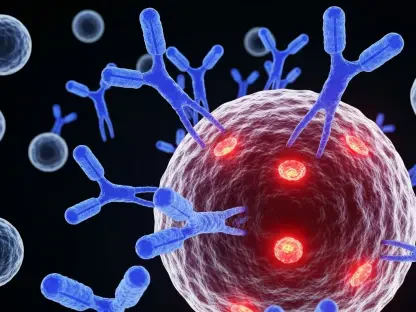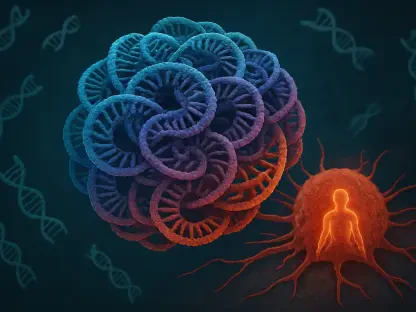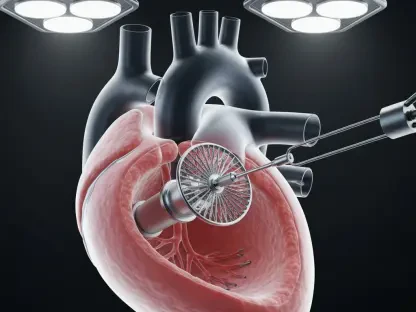The cell and gene therapy (CGT) sector stands on the precipice of revolutionary change, reminiscent of the fast food industry’s notable standardization achievements. This provocative comparison emerged during a recent discussion at BPI Europe in Hamburg, where industry leaders delved into the immense complexities and logistical hurdles faced by the CGT sector in achieving consistent production quality. While the fast food giant McDonald’s has mastered the art of delivering identical products worldwide, the CGT field grapples with significant obstacles. These include diverse and variable starting materials, a dearth of analytical capabilities, and intricate logistical challenges. As such, the question arises: can the CGT sector adopt a similar blueprint to enhance efficiency and reliability? By adopting a standardized approach, as exemplified by McDonald’s, the industry might overcome these challenges and potentially reduce developmental redundancies. Such standardization could lead to cost savings and streamlined processes but requires navigating a labyrinth of regulatory issues.
The Need for Consistency in Therapies
In the realm of biologics, like monoclonal antibodies, achieving a high degree of consistency is an attainable goal thanks to well-established processes and standards. However, for CGT, the complexity is a different beast altogether. Each therapy often contends with variable starting materials, making it nearly impossible to achieve the same level of uniformity. Kat Kozyrytska, founder of the Cell Therapy Manufacturability Program, highlighted the necessity of addressing this variability to lower production costs and improve the scalability of these therapies. The inherent biological variability in cellular materials is not easily tamed, and the disparate sources for genetic materials further complicate the scenario. However, the application of a standardized approach, as seen in global fast food chains, could serve as a valuable model. This would involve setting stringent guidelines for raw material selection, manufacturing processes, and quality assurance, ultimately paving the way for more predictable and reliable treatment outcomes.
Furthermore, achieving this level of standardization in the CGT industry could facilitate smoother regulatory processes. By developing and adhering to consistent quality benchmarks, companies would be better equipped to meet stringent compliance requirements imposed by regulatory bodies worldwide. However, this involves extensive collaboration across the industry, with stakeholders working together to define and implement these standards. While the challenges are manifold, the potential benefits in terms of cost efficiency, production scalability, and therapeutic reliability make the pursuit of standardization a worthwhile endeavor for the CGT sector.
Innovative Manufacturing Solutions
Another promising avenue, extensively discussed by industry experts, is the potential of decentralized manufacturing to address the hurdles in standardization. Sanjay Srivastava from Accenture championed decentralized models as potential game-changers for CGT production. In a decentralized system, local production facilities can ensure therapy production close to the point of care, which could significantly reduce complexities associated with transporting sensitive biological materials. This approach not only aids in maintaining the integrity of therapies but also aligns with the standardized practices seen in other industries. Decentralized production could also enable more flexible adaptation to local compliance standards, thereby alleviating some regulatory pressures.
Another solution that continues to gain momentum is outsourcing production to Contract Development and Manufacturing Organizations (CDMOs). By allocating production duties to specialized entities, CGT companies can leverage the expertise and established infrastructure of these organizations to achieve consistent quality output. However, this approach is not without its challenges. Careful vetting of CDMOs is essential to ensure compliance with regional standards and to maintain the desired quality across various locations. Transparent communication and contractually-defined responsibilities between the CGT companies and CDMOs could smooth the pathway toward achieving the consistency needed in CGT production.
Navigating Towards Standardization
The cell and gene therapy (CGT) sector is on the verge of transformative change, similar to the standardization milestones achieved by the fast food industry. This intriguing analogy emerged during a recent BPI Europe event in Hamburg, where industry experts discussed the significant complexities and logistical challenges faced by the CGT field in ensuring consistent production quality. Unlike the fast food giant McDonald’s, which has perfected the delivery of uniform products globally, the CGT sector struggles with varied starting materials, limited analytical tools, and intricate logistics. The central question is whether CGT can adopt a similar model to boost efficiency and reliability. By standardizing processes akin to McDonald’s, the industry could potentially overcome its hurdles, minimizing redundant efforts and cutting costs. However, this path to standardization must carefully navigate a maze of regulatory issues to achieve these efficiencies without compromising safety or efficacy.









